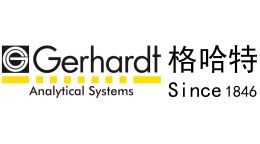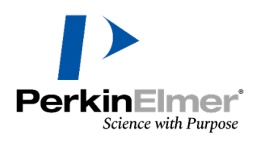沉积物中三嗪类农药莠去津(atrazine又名阿特拉津)检测的样品振荡前处理
检测样品 固体废物
检测项目 三嗪类农药
参考标准 HJ 1052-2019土壤和沉积物 11 种三嗪类农药的测定 高效液相色谱法
方案详情文
智能文字提取功能测试中
超声作用对渗流带泥沙中阿特拉津消散的影响Sonication Effects on Atrazine Dissipation in Vadose Zone Sediment Slurries使用格哈特Laboshake振荡器120rpm连续振荡10天The slurries were stabilized for 10 days on a Shaker (120 rpm,Laboshake, Gerhardt, Konigswinter, Germany)2 of 12Environments 2017,4,18 Sonication Effects on Atrazine Dissipation in Vadose Zone Sediment Slurries 芬兰赫尔辛基大学环境科学系 Kaisa Kerminen * and Merja Hannele Kontro Department of Environmental Sciences, University of Helsinki, Niemenkatu 73, Laht i 15140, Finland; merja.kontro@helsinki.fi * Correspondence: kaisa.kerminen@he l sinki.f i ; Tel.: +358-40-823-8446 Academic Editor: Yu-Pin Lin Received: 28 November 2016; Accepted: 14 February 2017; Published: 19 February 2017 Abstract : Herbicide atrazine easily leaches to groundwater, where i t is persistent. We studied whether sonication accelerates atrazine dissipation (100 mg.L-1) in vadose zone sediment slurries. Sediments were from 11.3 to 14.6 m depths in an atrazine-contaminated groundwater area. The slurries and autoclave-sterilized slurries were sonicated (bath, 43 kHz, 320 W) for 0, 5, 10, 20, or 30 min once/twice a day, and atrazine concentrations were followed. Atrazine concentrations raised in the sterilized slurries sonicated twice a day for 10 min (86.0 ±7.7 mgL-), while they remained low in the slurries (56.6±10.9 mg·L -1) due to microbial degradation. Twice a day sonications for 20-30 min did not enhance microbial atrazine degradation. Chemical dissipation may have occurred i n the sterilized slurries sonicated twice a day for 30 min. However, sonication did not decrease atrazine concentrations below those in the non-sonicated slurries (55.1±7.8 mg.L-l ) and sterilized slurries (67.1±7.9 mgL-I). Atrazine concentrations in t he sterilized slurries were higher than in the slurries, indicating changes in sediment structure and adsorption due to autoclaving. Sonication parameters needed for releasing atrazine from interactions with particles may be close to those damaging microbial cells. This suggests difficulties in enhancing microbial atrazine degradation by sonication, though chemical degradation can be enhanced. Keywords: atrazine; pesticide; sonication; autoclaving; dissipation; degradation; subsurface sediment slurry 1. Introduction The herbicide atrazine (6-chloro-N-ethyl-N'-(1-methylethyl)-1,3,5-triazine-2,4-diamine) is used to control the growth of broad-leaved and grassy weeds.It and its degradation products are commonly found in the soil and surface water, and they can elute through the subsurface sediments to groundwater [1,2]. Atrazine concentrations nt SO1can be particularly high in point source pollutions, e.g., in the vicinity of dealerships [3-5]. Atrazine has been reported to be an endocrine disrupting compound [6,7]. To protect the drinking water quality, the European Commission prohibited the sale of atrazine in 1992[8]. Atrazine dissipation has been studied extensively due to its wide use, occurrence in environment as a contaminant, and possible adverse effects. Methods for the removal of atrazine from soi l , subsurface sediments, and groundwater are needed. Microbes and microbial consortia can degrade and even mineralize atrazine [3,9], though the degradation rate is slow in subsurface sediments [5,10,11]. The chemical decomposi t ion of atrazine by advanced oxidation methods like sonication has also been studied [12-18]. Mild sonication homogenizes suspensions, enhances extraction, and increases microbial produc t ivity, while strong sonication conditions disrupt cells and cause the chemical degradation of xenobiotics [16,19-23]. Sonication separately and in combination with other advanced oxidation processes has induced chemical atrazine degradation in an aqueous solution [13-15,18]. U l trasound generates hydroxyl radical s and other radical species at the extreme temperature and pressure condi t ions that occur when the cavities formed by sonication implode in water. The direct pyrolysis in the sonication cavi t ies is regarded as negligible due to the low volatil i ty of atrazine [14]. Atrazine has also been chemically degraded by ultrasound in a slurry, where the cavitation bubbles are preferentially formed at t he inter f ace of solid and liquid [16,17]. When the bubble collapses, a high-speed jet is created towards the surface of the particle. As a result, the adsorbed pesticides are exposed to high temperatures and may undergo pyrolysis. It is not known, however, whether microbial atrazine degradation can be enhanced by sonication. For instance, the microbial phenantrene degradation rate was increased fourfold by intermittent sonication in a solid-liquid system [24]. The enhanced degradation was attributed to the improved mass transport of phenantrene between the solid and liquid phase, which increased phenantrene bioavailability to microorganisms. However, the behavior of different contaminants in matrix-contaminant interactions differ [19]. To clarify the relationships between the sonication, and the microbial and chemical atrazine dissipation in subsurface sediments, we studied sonication effects on atrazine dissipation in the subsurface sediment slurries. The hypotheses of the study were that microbial (slurries) and chemical (sterilized slurries) atrazine dissipation can be enhanced by sonication (43 kHz, 320 W), while the null hypothesis was that dissipation cannot be improved. The high initial atrazine concentration of 100 mg·L-1 was chosen, to ensure t hat bioavailability does not limit microbial degradation, and to reveal atrazine behavior at concentrations above the water solubility limit of 33 mgL -in slurry suspensions homogenized by sonication. High concentrations represent an example of point source pollution. 2. Materials and Methods 2.1. Sediments and Chemical Analyses Sediments were collected in drillings next to the Lahti railway station (Finland), which is located in a pesticide-contaminated groundwater area. The drill diameter was 75 mm down to about 10 m, and below that 48 mm. Sediments from the depths of 11.3-14.6 m were collected in sealed plastic bags at the drilling site, where groundwater table was at about 15 m [25]. Sediment size fractions were separated by sieving for 30 min at the amplitude 50 (AS 200 basic, Retsch GmbH, Haan, Germany). To determine their dry weight, 3-5 g of sediments in t riplicate were dried for 16 h at 105°℃, followed by heating at 550 °C for 4 h to measure the organic matter (SFS-EN 13039, SFS-EN 13040). Sediment total carbon (total-C) was analyzed in duplicate by LECO Model 2000 CNS analyzer (LECO Corporation, St. Joseph, MI, USA) according to its instructions. Sediment ammonium (the limit of detection, LOD, 0.039 ugg), nitrate (LOD, 0.1 ugg-), nitrite (LOD, 0.1 ugg), and elements (Cd, LOD 0.2 ugg;Co;Cr; Cu; Pb; Mn; Ni; Fe;Zn) were determined as a purchased service from Ramboll Analytics Ltd. as presented in Talja et al. [10]. Microorganisms were cultivated f rom sediment slurries. 2.2. Sonication Experiments Sonication experiments were done in 100 mL f lasks with hole (diameter 5 mm) caps, which were covered with aluminum foil. The flasks contained15.0 g (dry weight) of sediment, 50 mL of sterile distilled water, and 100 mg.L -1 of atrazine (0.5 mL from 10 g.L -1 stock i n methanol; Dr. Ehrenstorfer GmbH, Augsburg, Germany). The sediment slurries were sterilized by autoclaving (Instru, Santasalo-Sohlberg, Helsinki, Finland) on three successive days for 1 h at 121 °C and 101 kPa pressure. The flasks were incubated at the room temperature of 21 ±2℃ in a shaker (120 rpm, Laboshake, Gerhardt, Konigswinter, Germany), all in triplicate. In the 0, 5, and 10 min sonication experiment, the slurries amended with 100 mg·L -1 of atrazine were allowed to stabi l ize on the shaker (120 rpm) for f ive days, and then the effects of 0, 5, and 10 min sonications on atrazine concentrations were studied using Branson 8510 bath sonicator (43 kHz, RF-power 320 W; W.A. Brown Industrial Sales Inc., Richmond, VA, USA). The slurry and sterilized slurry flasks were placed in a sonicator bath filled with water to the mark. The initial bath water temperature was at room temperature, and it increased approximately 1.3°℃/10 min sonication. The fl asks were sonicated once a day for 0, 5, or 10 min on days 5, 6, 7, 8, 12,13, 14, and 15, followed by a stabilization period. As the effects of the once a day sonications were minor, the sonications were continued twice a day for 0,5, and 10 min on days 25, 26, 27, 28,29, 32,33, 34,35, and 36. The 100 pL samples were taken on days 0, 1, and before the daily sonications. Prior to the samplings, the flasks were shaken to evenly distribute atrazine, and then large particles were allowed to settle for at least 15 min, while the suspended colloids remained in the water phase. In the 0, 20, and 30 min sonication experiment, the slurries amended with 100 mg·L-1 of atrazine were allowed to equilibrate on the shaker (120 rpm) for six days. Then the impacts of twice a day sonications for 0, 20, and 30 min on atrazine concentrations were studied in the slurries and sterilized slurries, as presented above. The f lasks were sonicated twice a day for 0, 20, or 30 min on days 6,7, 10, 11, 12, 13, and 14. The 100 uL samples were taken at the beginning of the experiment (day 0) and before the sonications on days 6, 10, 13, and 17. Samples were taken as in the 0, 5, and 10 min sonication experiment. 2.3. Pesticide Adsorption and Microbial Growth in the Sediment Slurries To determine the quantity of atrazine remaining adsorbed in the sediments and microbial numbers in the slurries with and without atrazine addition, the following experiment was done. Sediments (15.0 g) and 50 mL of sterile dist i lled water were incubated with and without 100 mg.L-1 of atrazine as presented above, all in duplicate. The slurries were stabilized for 10 days on a shaker as presented above (final atrazine concentration 61.9±8.9 mg·L-1 in atrazine-amended slurries) to allow adsorption to occur and reach the equilibrium stage [26]. The liquid phase was removed, ten-fold serial dilution was performed, and 100 uL was cultivated on mineral agar plates having 33 mg.L -1 of atrazine as a nitrogen source, as presented in Liu et al . [27] and Pukki l a et al. [28]. The colonies were counted after 5 days incubation at the temperature of 21 ±2°C. The sediment was extracted as presented below. 2.4. Pesticide Analyses The 100 uL sample was supplemented with 400 uL of methanol:water (3:1, v/u), and 100 uL of the internal standard simazine in methanol: water (3:1, v/u) to gain the f inal concentration of 11.9-15.3 mgL-1. The simazine background level in the sediments was low, 11.4 ugL-1(<0.1%of total).The 600 uL standards in methanol:water (3:1, v/o) contained 0.5, 2.5, 5, 10, 20 and 35 mg·L-1 of atrazine (external standards), and the same quantity of simazine as in samples (internal standards). The responses were l inear with the correlation coefficients of 0.997 ±0.007 (R²±S.D.). The quantification l imi t was about 0.56 mg·L-1 for atrazine. The standards and samples were filtered through 0.45 um GHP polypropylene membrane filters (Acrodisc@, Gelman, Pall Corporation Ltd., New York,NY, USA), and 20 pL was analyzed by high performance liquid chromatography (HPLC) equipped with Shimadzu Prominence SIL-20A auto sampler, LC-20AT solvent delivery module, DGU-20A5 on-line degasser, SPD-20A UV/VIS detector (225 nm; Shimadzu, Kyoto, Japan), SunF i re column (C18, 3.5 um, 3.0 mm × 150 mm, Waters, Milford, MA, USA) and Shimadzu LC Solution software control system (Shimadzu, Kyoto, Japan). The chromatographic separation was carried out using the following gradient profile: the initial acetonitrile concentration was held at 30% for 3.5 min, and then i t was increased to 65%, which was held until 8.5 min. Finally, the acetoni t rile concentration was decreased back to 30%, which was held until 14 min. The mobile phase flow rate was 0.4 mL·min -i . To extract atrazine adsorbed to 15 g of sediments, 20 ug of propazine (Dr. Ehrenstorfer GmbH, Augsburg, Germany) was added as an internal standard. The sediment was extracted three times with 18.0 mL of methanol:water (3:1, v/u) by shaking overnight at 200 rpm (Unimax 1010, Heidolph Instruments, Schwabach, Germany). Before the extractions, the sample was sonicated for 15 min at 20 °℃ (40 kHz, Everest, Istanbul, Turkey). The extracts were separated by centrifugation for 10 min at 1250× g (Multifuge 1S-R Heraeus, Kendro Laboratory Products, Osterode, Germany), and stored at -20C. The combined extracts were evaporated to dryness, and the residue was extracted twice with 300 uL of acetone. The extraction solution was sonicated as above, followed by centrifugation (13,000× g). The pooled acetone extracts were filtered , and pesticides were analyzed using Shimadzu GCMS-QP-2010Ul t ra GC-MS (Shimadzu, Kyoto, Japan), autosampler AOC-20i+s, ZB-5MS capillary column (29 m, 0.25 mm, 0.25 um), carrier gas helium (1.29 mL/min), injector temperature 250°C, and 2 uL spl i tless injection. The oven temperature was held at 120 °C for 2 min, increased 20 °C/min to 180°C, held for 5 min, and then increased 20°C/min to 280 °C, held for 8 min. The mass spectra were recorded at an electron energy of 70 eV. The ion source temperature was 230 °℃, and interface temperature was 250 °C. Five s t andards in acetone contained 0.133-3.435 nmol·L -1of atrazine, desethylatrazine (DEA), deisopropylatrazine (DIA), and desethyldeisopropylatrazine (DEDIA). The limit of quantification (LOQ) was about 0.1 ug/sample. The ions followed were m/z 202and 215 (quantification) for atrazine; 174 (quantification) and 187 for DEA, m/z 158 (quanti f ication),173 and 175 for DIA, m/z 110, 145 (quantification) and 147 for DEDIA, and m/z 172, 187,214, and 229 (quantification) for propazine. The extraction efficiency of atrazine is 102.1% ±14.0%. The quantity of atrazine, simazine and 2,6-dichlorobenzamide (BAM) i n the sediments was determined as presented in Mattsson et al . [25]. 2.5. Calculations Results are presented on a dry weight basis. Atrazine concentrations are presented as mean ± S.D.(n ≥ 3). Results were analyzed using two-factor (sonication and autoclaving) repeated measures analysis of variance (RMA), followed by pairwise comparisons (PC) (IBM SPSS Statistics, version 23, IBM Corporation, New York, NY, USA). In the 0, 5, and 10 min sonications, the RMA was performed separately on days 5 to 15 (sonications once a day), and 25 to 36 (sonications twice a day). In the 0, 20, and 30 min sonications, the RMA was performed between days 6 to 17 (Table 1). The highest atrazine concentrations reached by sonications were compared using Anova, followed by Tukey honest significant difference (HSD) test. Mann-Whitney’s test (M-W) was used for pairwise comparisons. Table 1. The two factor (sonication, sterilization) repeated measures analysis of variance (RMA) of atrazine concentrations in the slurries and steri l ized slurries, both sonicated for 0, 5, 10, 20, or 30 min (n=3). Sonications were done once a day on days 5-15, and twice a day on days 25-36 and 6-17. The p-values of between subjec t effects are presented. Sonication Time (min) 0, 5 and 10 0, 20 and 30 Time in experiment (day) 5-15 25-36 6-17 Slurries and sterilized slurries Sterilization <0.001 <0.001 <0.001 Sonication 0.421 0.121 0.002 Sterilization*Sonication 0.433 0.007 0.050 Sterilized slurries Sonication 0.270 0.002 0.416 Slurries Sonication 0.554 0.296 0.001 * Interaction between sterilization and sonication. * Interaction between sterilization and sonication. 3. Results 3.1. Sediments Sediment cores were collected by drill i ng in a groundwater area contaminated with simaz i ne, atrazine, and BAM i n concentrations of 38, 13, and 5 ugkg(dry weight), which are equivalent to 0.57, 0.195, and 0.075 ug in 15 g of sediments, respectively. The sediment size fractions were: <45 um, 0.9%;45-100 um, 2.6%;100-125 um, 3.4%; 125-250 um, 33.7%;250-500 um, 38.6%; 0.5-1 mm,16.7%; 1-2 mm, 3.5%; 2-4 mm, 0.2%; 4-8 mm, 0.2%; and >8 mm (diameter), 0.2%, i.e., the sediment was sandy. The fractions 24 mm were removed from the sonication experiments. Sediment organic matter (4.3±0.2 mgg) and total-C(0.31 mgg-) concentrations were low, and ammonium, nitrate, nitrite, and Cd were below t he detection limits. The sediments contained 3.4±1.0 ug.g- of cobalt,12±4ugg - of chromium, 15 ±5 ugg -1 of copper, 2.8± 1.0 ugg - of lead, 96±24 01manganese, 6.1 ±2.0 ug.g -1 of nickel, 12 ±3 mgg -1 of iron, and 27±9 ugg-1 of zinc. Sonication effects on atrazine dissipation were studied in the slurries and sterilized slurries, to separate microbial and chemical dissipation. Sonication times were once (days 5-15) and twice a day (days 25-36) for 0, 5 and 10 min in the first experiment, and twice a day (days 6-17) for 0, 20 and 30 min in the second experiment. 3.2. The 0, 5 and 10 min Sonication Experiment Atrazine concentrations fell during the initial stabilization period from 100 mg·L-1 to 64.1±8.9 mg.L -1 in the slurries, and only to 79.5 ±12.3 mgL -1 in the sterilized slurries, the difference of 15.4 mgL-1 being statistically significant (M-W, p=0.007; Figure 1). Atrazine concentrations i n the slurries continued to be lower than in the sterilized slurries throughout the experiment (RMA, p < 0.001; Table 1), the difference between the non-sonicated slurries and the sterilized slurries being on the average 9.7 ±3.2 mg·L -1 on days 5-36. Figure 1. Atrazine concentrations (n =3) in the slurries and sterilized slurries, all sonicated for 0, 5, or 10 min. One or two sonication times per day are marked with +. The average o f standard deviations was 4.9 ±3.0 mgL -1. Once a day sonications for 5 and 10 min were not strong enough to affect atrazine concentrations in the slurries and sterilized slurries, compared to the non-sonicated slurries and sterilized slurries, as can be seen from two-factor RMA results on days 5-15 (p= 0.421 for sonication; Table 1, Figure 1). When the 5 and 10 min sonications were repeated twice a day between days 25-36, atrazine concentrations in the steri l ized slurries sonicated for 10 min were higher than in those sonicated for 5 min, or i n those without sonication (RMA, p=0.002 for sonication; PC, p≤ 0.002; Figure 1, Table 1). Twice a day sonications for 5 min were not strong enough to affec t atrazine concentrations in the sterilized slurries, but sonications twice a day for 10 min increased atrazine concentrations to the highest measured values of 86.0±7.7 mg·L-1. In contrast, in the slurries twice a day sonications for 5 and 10 min did not af f ect significantly atrazine concentrations (RMA, p= 0.296 for sonication), which were 56.6±10.9 mg·L- on days 25-36. I ndeed, an interaction between the sterilization and sonication was obtained in t wo-factor RMA on days 25-36 (p= 0.007), that is sonication effects on atrazine concentrations differed between the sterilized slurries and slurries. Twice a day sonications for 10 min increased atrazine concentrations in the sterilized slurries, but not in the slurries apparently due to microbial atrazine degradation. 3.3. The 0, 20 and 30 min Sonication Experiment After the initial stabilization period, atrazine concentrations in the slurries (53.8±5.4mgL-I) were again lower than i n the sterilized slurries (76.0 ±6.4 mgL-1) (M-W, p <0.001, Figure 2). The influence of sterilization continued to be significant also on days 6-17 (RMA, p <0.001 for sterilization; Table 1, Figure 2). Atrazine concentrations in the non-sonicated slurries remained on average 23.5±1.4 mg·L-l ower than in the non-sonicated sterilized slurries throughout the experiment on days 6-17. Decreased atrazine concentrations were also measured in the sonicated slurries, compared to the sonicated sterilized slurries. 20 Figure 2. Atrazine concentrations (n=3) in the slurries and sterilized slurries, al l sonicated for 0, 20, o 30 min. Two sonications per day are marked with +. Twice a day sonications for 20 and 30 min did not affect atrazine concentrations of 75.1±7.9 mg·L-1 in the sterilized slurries on days 6-17 (RMA, p = 0.416; Figure 2, Table 1), as the concentrations were still high immediately after the stabilization period. In contrast, twice a day sonications increased atrazine concentrations from 44.0±3.0 mg·L -1 of the non-sonicated slurries to 66.3 ±3.0 mg·L-1 of the slurries sonicated for 20 and 30 min, the difference of 22.3 mg.L-1 being statistically significant (RMA, p= 0.001; PC,p≤0.002). Thus, an i nteraction between the sterilization and sonication was obtained in two-factor RMA on days 6-17(p=0.050), which indicates that 20 and 30 min sonication effects on atrazine concentrations differed between the slurries and sterilized slurries. Twice a day sonications for 20 and 30 min did not affect atrazine concentrations in the sterilized slurries, but the sonications increased concentrations in the slurries. Microbes in the slurries did not have time to degrade more atrazine during t he stabilization period, and t hereafter the longest sonication times of 20 and 30 min may have disturbed t he microbial degradation. 3.4. Summary of the Sonication Effects on Atrazine Concentrations The highest atrazine concentrations, achieved in the slurries and sterilized slurries by sonication, were plotted as a function of twice a day sonication t imes of 5, 10, 20, and 30 min (Figure 3). Atrazine concentrations i n the non-sonicated sterilized slurries were 65.8±4.5 mg.L -1. When the sterilized slurries were sonicated twice a day for 10-20 min, atrazine concentrations i ncreased significantly by 19.6 mg·L-1 to 85.4±6.4 mgL- (Anova and Tukey HSD,p≤ 0.002) (Figure 3). When the sonication time was further increased to twice a day for 30 min, atrazine concentrations in the sterilized slurries increased only by 7.6 mg.L-1 to 73.4±3.2 mg·L-1 compared to the non-sonicated sterilized slurries, which is not a statistically significant difference. Atrazine concentrations in the sterilized slurries sonicated twice a day for 10 min were higher than those in the sterilized slurries sonicated twice a day for 30 min (Tukey HSD,p=0.034). In the latter, chemical atrazine dissipation may have occurred. Figure 3. The highest atrazine concentrations i n the slurries and sterilized slurries sonicated twice a day for 0 (days 34-36, n=9, day 6, n=3), 5 (days 34-36, n =9), 10 (days 34-36,n=9), 20 (day 13, n=3), and 30 (day 13,n=3) min. Numbers indicate statistically signi f icant differences (Anova, Tukey HSD, p < 0.050) between sonication t imes, and asterisks indicate statistically significant di f ferences (T-test, p <0.050) between slurries and steri l ized slurries. Atrazine concentrations in the non-sonicated slurries were 48.8 ± 5.8 mg·L- (Figure 3). The concentrations increased to 63.2 ±6.5 mg·L-1 due to the t wice a day sonications for 5-30 min; on average, 14.4 mg.L -1 of atrazine was re l eased by sonication compared to the non-sonicated slurries. Atrazine concentrations in the sonicated slurries were significantly higher than in the non-sonicated slurries (Anova, p=0.002; Tukey HSD,p≤0.017), with the exception of 10 min sonications (Tukey HSD,p=0.360). Atrazine concentrations increased least in the slurries sonicated twice a day for 10 min, while the atrazine quantity bound to the sediments in the non-sonicated slurries was only 4.6±3.9 mgkg -(1.4±1.2 mgL -). The DEA quantity i n the sediment extracts of the non-sonicated slurries was below the LOQ, and DIA and DEDIA residues were not detected. In the experiment done to determine the pesticide adsorption and microbial growth, the microbial numbers increased from 7×104 cfumL -1 of the non-atrazine amended slurries to >10& cfumL -1 of the slurries amended with 100 mg·L - of atrazine. The microbial atrazine degradation seemed to be the best in the slurries sonicated twice a day for 10 min. 4. Discussion Atrazine concentrations were the lowest in the slurries, and they could not be increased by sonication to the same levels as in the sterilized slurries, the difference being as much as 30.8 mg·L-1 between the slurries and sterilized slurries sonicated twice a day for 10 min, while only about 1.4±1.2 mg·L -1 of atrazine was adsorbed t o t he sediments. The sediments were collected from the depth of 11.3-14.6 m in groundwater area having atrazine i n sediments and groundwater [10,25]. As the atrazine exposure increases the density or activity of atrazine-degrading microorganisms [5], a significant portion of atrazine in the slurries appeared to be degraded by inherent sediment microorganisms. Microbial growth increased by atrazine addition in the atrazine-amended sediment slurries compared to non-amended slurries, and ammonium, nitrate, and nitrogen concentrations in the sediments were below the detection l imit. This suggests that the increased microbial growth could be related to the use of atrazine as a nitrogen source. Microbial atrazine degradation ceased at high concentrations above the water solubility limit of about 33 mg·L -1 [29], at about 48.8 mg·L -1 i n the non-sonicated slurries, and at about 63.2 mg·L -in the sonicated slurries. For comparison, pesticide dichlobenil dissipated in subsurface deposit slurries to the low concentration of 1.0-6.3 mg.L-1, and its degradation product BAM to 3.0-11.3 mg.L-1 [30]. Atrazine forms strong complexes in a solution with organic and inorganic sediment colloids [31,32]. Such interactions could prevent microbial atrazine degradation in t he slurries, and also the atrazine release by sonication for microbial degradation. Mild sonication could enhance microbial atrazine degradation, as 15 min sonication/240 min cycle has increased microbial ethanol production from cellulose (sonication horn, 36 kHz, 150 W) [33]. In this study, microbial atrazine degradation was the best in the sediment slurries sonicated twice a day for 10 min. However, sonication improved microbial degradation only slightly or not at all, as atrazine concentrations in the sonicated slurries did not fall below those in the non-sonicated slurries. In addition, the sonication time range that affected atrazine concentrations and allowed microbial atrazine degradation was narrow. Once a day sonications for 10 min, or twice a day sonications for 5 min did not affect atrazine concentrations, while the increase in the sonication time to twice a day for 20-30 min may already have inhibited microbial atrazine degradation. Similarly, 20 min sonications at the intervals of 120/240 min have enhanced microbial phenantrene degradation in a solid-l iquid system, but not 25 min sonications at intervals of 205 min in two-liquid-phase systems (sonication horn, 42 kHz, 70 W) [24,34]. Biological activity started to decrease after 5 min sonication (40 kHz,0.115 W/cm’) i n the regeneration of biological activated carbon [35]. Continuous sonication for 12 h prevented growth, cell division and sugar metabolism of Klebsiella oxytoca strain P2 (sonication horn,36 kHz, 150 W) [33]. Microbes tolerate stronger sonication conditions in the slurries than in the pure liquid, and intermittent sonication better than continuous, while sonication t ime ranges improving microbial degradation may be quite narrow. sonication t ime for dissolving atrazine and homogenizing atrazine suspensions was between 10 and 20 min. Atrazine concentrations in the sterilized slurries sonicated twice a day for 30 min were lower than i n those sonicated twice a day for 10 min (Figure 3). The twice a day sonications for 30 min may have been strong enough to cause chemical atrazine dissipation in the sterilized slurries, while atrazine concentrations in the slurries sonicated twice a day for 5-30 min were the same. The autoclave steri l ization has disturbed the composition of subsurface deposits and enhanced chemical atrazine dissipation [10]. In this study, sonication conditions needed for chemical atrazine dissipation in the autoclave-sterilized slurries seemed to be milder than in the slurries. According to the l iterature, chemical atrazine dissipation by sonication in aqueous solution has varied between 20% and 100%, depending on sonication powers, frequencies, and the type of the sonication equipment (Table 2). In studies using sonication horn, 20%-55% of atrazine was dissipated at t he frequency of 20 kHz and powers of 18.5-22.8 W [14,15]. When the frequency increased to 500 kHz, the atrazine degradation rate increased to 100% [15]. When the power increased to 500 W, the atrazine degradation rate increased to >81% [13]. Generally, in the presence of the same sonication power and frequency, the chemical atrazine degradation decreases when the sonication horn i s changed to the sonication bath, and aqueous solution is changed to the sediment slurry. Water in t he sonication bath and soil/sediment in the slurry reduce the sonication efficiency for chemical atrazine degradation. In studies using the sonication horn in soil slurries and sonication powers between 150 and 1700 W (20 kHz), over 75% of atrazine was degraded [16,17]. Xu et al. [18] used the sonication bath with 400 kHz frequency and 120 W power to degrade 45% (100%) of atrazine in water using long sonication times of 60 (360) min. In this study, the sonication at the 43 kHz frequency and 320 W power twice a day for 30 min may have caused chemical atrazine dissipation of <26.6% of the initial quantity of 100 mgL - (day 13, Figure 2). However, concentrations did not decrease below those in the non-sonicated sterilized slurries. With the equipment used, longer sonication times are needed to increase chemical atrazine dissipation in the slurries. Table 2. The percentages of atrazine degraded by sonication. The i nitial concentrations i n experiments, and sonication frequency, power and time. Sonication System Sonication Atrazine Frequency (kHz) Power (W) Time (min) Concentration Degradation% Reference Sonication horn Water (pH 3) 20 500 150 0.193mM 81 13 Water (pH 3) 20 500 60 0.057 mM >90 13 Water 20 25 360 0.1mM 20 [14] Water (pH7) 20 18.5 120 0.1mM 55 [15] Water (pH7) 500 18.5 80 0.1mM 100 15 Soil slurry (30 wt.%) 20 1700 2 14ug/g >94 16 Soil slurry (50 wt. %) 20 150 10 58ug/g >85 17 Soil slurry (16.6 wt.%) 20 150 10 58 ug/g 75 [17] Sonication bath Slurry (23 wt. %) 43 320 5-30 0.46mM* 0-27 This study Water (pH6.5) 400 120 60 (360) 0.02mM 45(>90) [18] *333 ug/g· Atrazine sale i n Finland ended in 1992, but atrazine i s still found in groundwater and subsurface sediments [10,25]. The results of this study showed that microbes able to degrade atrazine occur in the dril l ing site sediments collected from the groundwater recharge area, but the microbial atrazine degradation ceased at high concentrations. Therefore, microbial atrazine degradation may be limited during water run-off through the deep vadose zone sediments into the groundwater, though atrazine dissipation in f lowing water has been greater than in stagnant water [41]. The interactions of atrazine and particles in the water phase appeared to be strong, i n addition to the adsorption to sediments. 5. Conclusions Atrazine appeared to be degraded in the slurries by indigenous sediment microbes, as atrazine concentrations could not be i ncreased by sonications twice a day for 10 min, but they increased in the sterilized slurries. In addition, microbial numbers increased in the sediment slurries amended with 100 mg·L -1 of atrazine, but not in the slurries without atrazine addition, suggesting that atrazine was used as a nitrogen source in the slurries exhausted of nitrogen. However, microbial atrazine degradation was inhibited at high concentrations above the water solubility limit of 33 mg·L-1,at about 48.8 mg·L-1 in t he non-sonicated slurries, and at about 63.2 mg·L-1 in the sonicated slurries. All water-soluble and also part of atrazine above t he solubility limit (up to 48.8-63.2 mg.L-1) seemed not to be bioavailable, apparently due to the interactions with the slurry particles and sediments. Sonication times needed to release atrazine from such interactions for microbial degradation appeared to be close to those damaging microbes. Autoclave sterilization affected sediment structure, decreased atrazine adsorption, and increased its concentration in the sterilized slurries. Atrazine seemed to dissipate chemically in the sterilized slurries under milder sonication conditions than in the slurries. The concentrations in the sterilized slurries did not increase by twice a day sonications for 30 min, as they did in the slurries where microbial degradation may have impaired. However, atrazine concentrations in the slurries and sterilized slurries did not fal l due to twice a day sonications for 5-30 min (43 kHz, 320 W, sonication bath) below those in the non-sonicated slurries and steri l ized slurries. Although indigenous microbial atrazine degradation was observed in the heterogeneous sediments at high concentrations, it may be difficult to i mprove by sonication, opposite to the hypothesis. However, sonication can be used for enhanced chemica l atrazine dissipation. In addition, the results revealed that microbial atrazine degradation ceased in the slurries at high concentrations above the water solubility limi t . Acknowledgments: The financial support by the Maj and Tor Nessling Foundation, the Ministry of Agriculture and Forestry of Finland, the Onni and Hilja Tuovinen Foundation, the Paijat-Hame Cultural Foundation, the Finnish Water Utilities Development Fund, Maa- ja vesitekniikan tuki ry, Ekokem Oy Ab, Erkki Paasikivi Foundation and Olvi Foundation are gratefully acknowledged. Author Contributions: Merja Hannele Kontro and Kaisa Kerminen conceived and designed the experiments; Kaisa Kerminen performed the experiments; Kaisa Kerminen and Merja Hannele Kontro analyzed the data; Kaisa Kerminen and Merja Hannele Kontro wrote the paper. Conflicts of Interest: The authors declare no conf l ict of interest. The founding sponsors had no role in the design of the study; in the col l ection, analyses, or interpretation of data; in the writing of the manuscript; and in the decision to publish the results. References 1. Meffe, R.; de Bustamante, I . Emerging organic contaminants in surface water and groundwater: A first overview of the situation in Italy. Sci. Total Environ. 2014,481,280-295. [CrossRef ] [PubMed ] 2. Lazorko-Connon, S.; Achari, G. Atrazine: Its occurrence and treatment in water. Environ. Rev. 2009, 17,199-214. [CrossRef 3. Mandelbaum, R.T .; Al l an, D.L.; Wackett, L.P. Isolation and characterization of a Pseudomonas sp. that mineralizes the s-triazine herbicide atrazine. Appl. Environ. Microbiol . 1995, 61, 1451-1457. [PubMed ] 4. Kruger, E.L. Enhanced Degradation of Pesticide Wastes in Soil: Implications for Bioremediation of Agrochemical Dealer Sites. Ph.D. Thesis, Iowa State University, Ames, IA, USA, 1996,1996. Paper 11378 5 Krutz, L.J.; Shaner, D.L.; Weaver, M.A.; Webb, R.M.T; Zablotowicz, R.M.; Reddy, K.N.; Huang, Y.; Thomson, S.J. Agronomic and environmental i mplications of enhanced s-triazine degradation. Pest . Manag. Sci . 2010, 66, 461-481. [C rossRef ] [P ubMed ] 6. Hayes, T.B.; Collins, A.; Lee, M.; Mendoza, M.; Noriega, N.; Stuart, A.A.; Vonk, A. Hermaphroditic, demasculinized frogs after exposure to the herbicide atrazine at low ecologically relevant doses. Proc. Natl. Acad. Sci. USA. 2002, 99, 5476-5480. [CrossRef ][PubMed] 7. Omran, N.E.; Salama, W.M. The endocrine disruptor effect of the herbicides atrazine and glyphosate on Biomphalaria alexandrina snails. Toxicol. Ind. Health 2016,32,656-665. [CrossRef ][PubMed ] 8. European Union. Council Directive 91/414/EEC: Concerning the Placing of Plant Protec t ion Produc t s on the Market; Council of the European Union: Brussels, Belgium, 1991. 9. Wang, J .; Zhu, L.; Wang, J; Xie, H. Isolation and characterization of atrazine mineralizing Bacillus subtilis strain HB-6. PLoS ONE 2014,9,e107270.[CrossRef ] [PubMed ] 10. Talja,M.K.; Kaukonen, S.;Kilpi-Koski,J.;Malin, I .; Kairesalo,T.;Romantschuk,M.; Tuominen, J.;Kontro,M.H. Atrazine and t erbutryn degradation in deposits from groundwater environment wi t hin t he borea l region in Lahti, Finland. J. Agric . Food Chem. 2008,56, 11962-11968. [CrossRef ] [PubMed] 11. Issa, S.; Wood, M. Degradation of atrazine and isoproturon in the unsaturated zone: A study from Southern England . Pest i c . Sc i . 1999,55,539-545. [CrossRef ] 12. Chiron, S.;Fernandez-Alba, A.; Rodriguez, A.; Garcia-Calvo, E. Pesticide chemical oxidation: State-of-the-art. Water Res. 2000,34,366-377.[C rossRef 13. Bahena , C.L.;Martinez, S.S.;Guzman,D.M.;del Refugio Trejo Hernandez,M. Sonophotocatalytic degradation of alazine and gesaprim commercial herbicides in TiO2 slurry. Chemosphere 2008, 71,982-989. [CrossRef ] P ubMed 14. Bianchi, C.L.; Pirola, C.; Ragaini, V.; Selli , E. Mechanism and efficiency of atrazine degradation under combined oxidation processes. Appl. Catal. B 2006,64,131-138.[CrossRef ] 15. Petrier, P.; David, B.; Laguian, S. Ultrasonic degradation at 20 kHz and 500 kHz of atrazine and pentachlorophenol in aqueous solution: Preliminary results. Chemosphere 1996,32,1709-1718. [CrossRef 16. Collings, A.F;Gwan, P.B.; Sosa Pintos, A.P. Soi l remediation using high-power ultrasonics,. Sep. Sci. Technol.2007,42,1565-1574. 17. Collings, A.F .;Gwan,P.B. Ultrasonic destruction of pesticide contaminants in slurries. Ultrason. Sonochem.2010,17,1-3. [CrossRef ][PubMed ] 18. Xu, L.J .; Chu, W.; Graham,N. Atrazine degradation using chemical-free process of USUV: Analysis of the micro-heterogenous environments and the degradation mechanisms. J. Hazard. Mater. 2014, 275,166-174[CrossRef [PubMed 19. Tadeo, J.L .; Sánchez-Brunete, C .; Albero, B.; Garcia-Valcarcel, A.I. Application of ultrasound-assisted extraction to the determination of contaminants in food and soil samples. J . Chromatogr. A 2010, 1217,2415-2440. [CrossRef] [PubMed] 20. Chisti, Y. Sonobioreactors: Using ultrasound for enhanced microbial productivity. Trends Biotechnol. 2003, 21,89-93. [CrossRe f 21. Rokhina, E.V.; Lens, P.; Virkutyte, J. Low-frequency ultrasound in biotechnology: State of the art Trends Biotechnol. 2009,27,298-306. [CrossRef [PubMed] 24 Isaza, P.A.; Daugulis, A.J. Ultrasonically enhanced delivery and degradation of PAHs in a polymer-liquid partitioning system by a microbial consortium. Biotechnol. Bioeng. 2009,104,91-101. [CrossRef ] [PubMed ] 25. Mattsson, M.K.; Liu, X.; Yu, D.; Kontro, M.H. Depth, soil type, water table, and site effects on microbial community composition in sediments of pesticide-contaminated aquifer. Environ. Sci. Pollut. Res. 2015,22,10263-10279. [CrossRef ] [PubMed ] 26. Liu, N.; Charrua, A.B.; Weng, C.-H.; Yuan, X.; Ding, F. Characterization of biochars derived from agriculture wastes and their adsorptive removal of atrazine from aqueous solution: A comparative study. Bioresour. Technol. 2015, 198,55-62. [CrossRef ] [Pu bMed 27. Liu, X.; Ecarnot, M.; Kontro, M.H. The physicochemical conditions of isolation source determine the occurrence of Pseudomonas fluorescens group species. Ann. Microbiol. 2015,65,2363-2377.[C rossRef 28. Pukkila, V.; Gustafsson,J.; Tuominen, J.; Aallonen, A.; Kontro, M.H. The most-probable-number enumeration of dichlobenil and 2,6-dichlorobenzamide (BAM) degrading microbes in Finnish aquifers. Biodegradation 2009,20,679-686. [CrossRef] [PubMed] 29. T omlin, C.D.S. The Pestic i de Manual, 12th ed.; The British Crop Protection Council : Omega Park Alton, UK,2000; pp. 42-43. 30. Pukkila, V.; Kontro, M.H. Dichlobenil and 2,6-dichlorobenzamide (BAM) dissipation in topsoil and deposits from groundwater environment within the boreal region in southern Finland. Environ. Sci. Pollut . Res. 2014,21,2289-2297.[CrossRef ][PubMed 31. de Jonge, L.W.;Kjaergaard, C.; Moldrup, P. Colloids and colloid-facilitated t ransport of contaminants in soils:An introduction. Vadose Zone J. 2004,3,321-325. [CrossRef ] 32. Meng, Z.; Carper, R. Effec t s of hydration on the molecular structure of metal ion-atrazine dimer complexes:A MOPAC (PM3) study. J. Mol. Struct .: THEOCHEM 2000, 531,89-98. [CrossRef ] 33. Wood, B.E.; Aldrich, H.C.; Ingram,L.O. Ultrasound stimulates ethanol production during the simultaneous saccharification and fermentation of mixed waste office paper. Biotechnol. Prog. 1997,13,232-237.[CrossRef ][PubMed ] 34. Isaza,P.A.;Daugulis,A.J. Enhanced degradation of phenantrene in a solid-liquid two-phase parti t ioning bioreactor via sonication. Biotechnol. Bioeng. 2010,105,997-1001. [P ubMed ] 35. Liu, C.; Sun, Y.; Wang, D.; Sun, Z.; Chen, M.; Zhou, Z.; Chen, W. Performance and mechanism of low-frequency ultrasound to regenerate the biological activated carbon . Ultrason. Sonochem. 2017, 34,142-153.[CrossRef ] [PubMed ] 36. Bollag,J.-M.; Blattmann, P.; Laanio, T. Adsorption and transformation of four substituted anilines in soil. J . Agric. Food Chem. 1978, 26, 1302-1306.[CrossRef] 37. Koskinen, W.C.; Cheng, H.H. Elimination of Aerobic Degradation During Characterization of Pesticide Adsorption—Desorption in Soil. Soil Sci. Soc . Am. J. 1982,46,256-259.[CrossRef ] 38. Baskaran, S.; Bolan, N.S.; Rahman, A.; Ti l lman, R.W. Effect of exogenous carbon on the sorption and movement of atrazine and 2,4-D by soils. Aust. J. Soil Res. 1996, 34, 609-622.[CrossRef ] 39. Ben-Hur, M.; Letey, J.; Farmer, W.J.; Williams, C.F .;Nelson, S.D. Soluble and solid organic matter effects on atrazine adsorption in cultivated soils. Soil Sc i . Soc. Am. J. 2003, 67,1140-1146. [CrossRef ] 40. Johnson-Logan, L .R.; Brohears, R.E.; Klaine, S.J. Partitioning behavior and the mobility of chlordane in groundwater. Environ. Sci. Technol. 1992,26,2234-2239.[CrossRef ] 41. Schwab, A.P.; Splichal , P.A.; Banks, M.K. Persistence of atrazine and alachlor in ground water aquifers and soil . Water, Air, Soil Pollut . 2006,171,203-235. [CrossRef ◎ 2017 by the authors; l icensee MDPI, Basel , Switzerland. This article is an open access article distributed under the terms and conditions of the Creative Commons Attribution (CC BY) l icense (http://creativecommons.org/licenses/by/4.0/).
关闭-
1/12
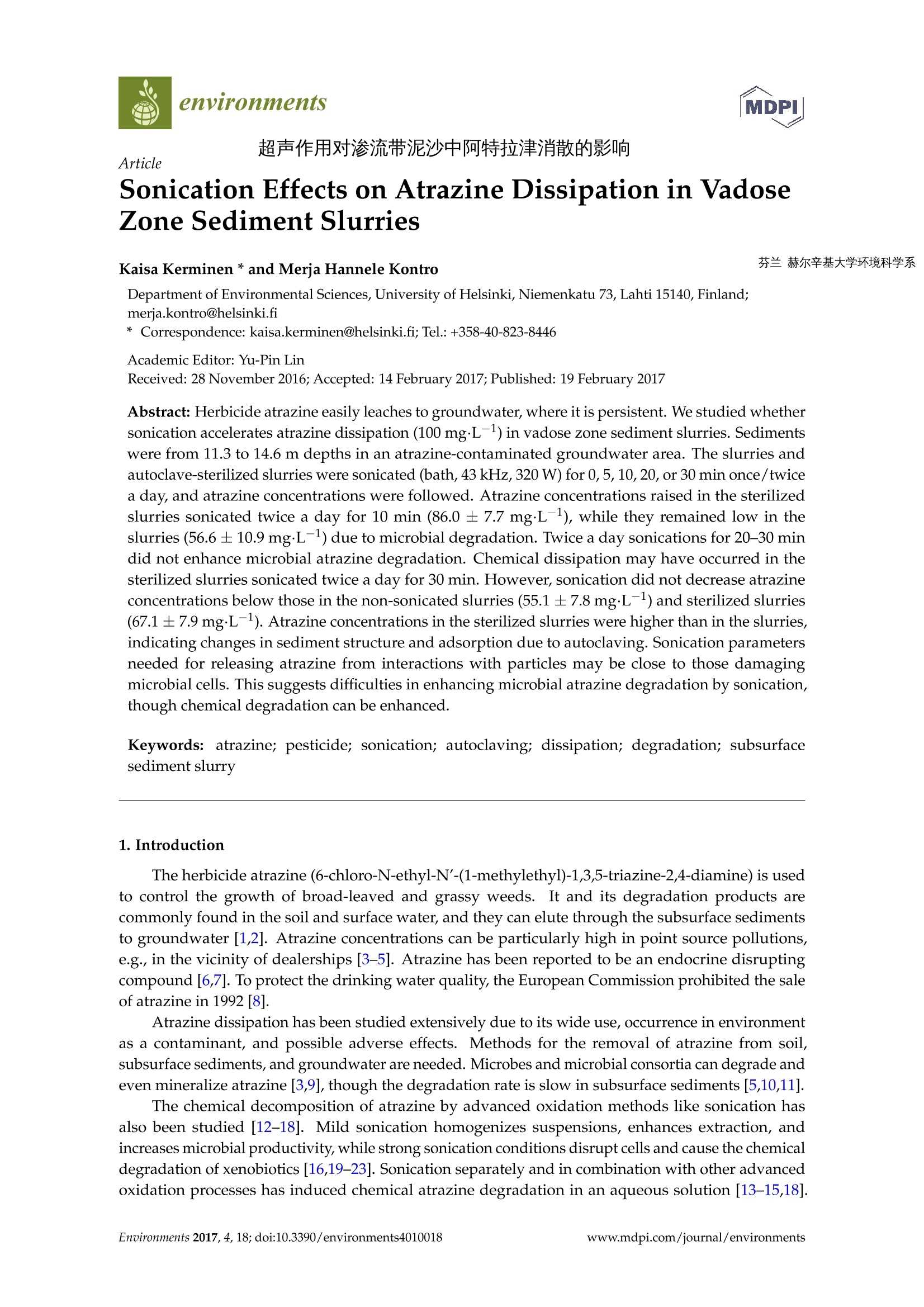
-
2/12
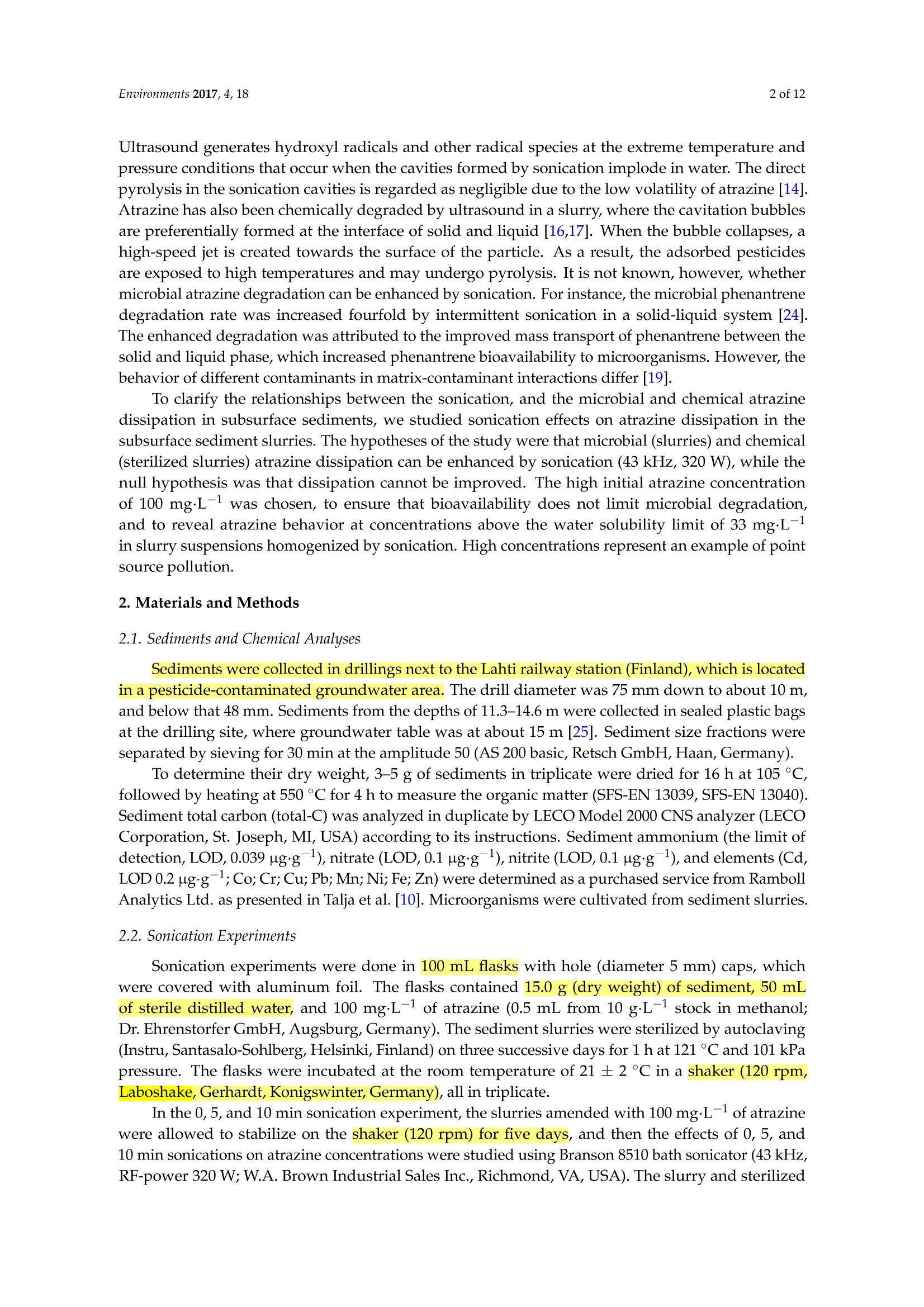
还剩10页未读,是否继续阅读?
继续免费阅读全文产品配置单
中国格哈特为您提供《沉积物中三嗪类农药莠去津(atrazine又名阿特拉津)检测的样品振荡前处理》,该方案主要用于固体废物中三嗪类农药检测,参考标准《HJ 1052-2019土壤和沉积物 11 种三嗪类农药的测定 高效液相色谱法》,《沉积物中三嗪类农药莠去津(atrazine又名阿特拉津)检测的样品振荡前处理》用到的仪器有格哈特强力高重现振荡器LS500/RO500、格哈特快速干燥仪STL56、德国移液器MM。
我要纠错
推荐专场
快速干燥仪
更多相关方案


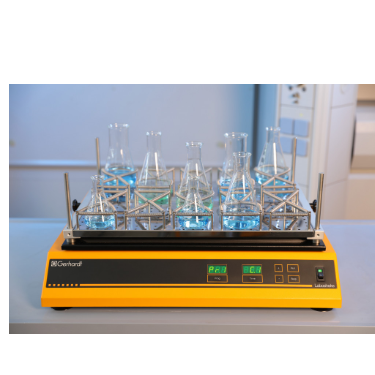

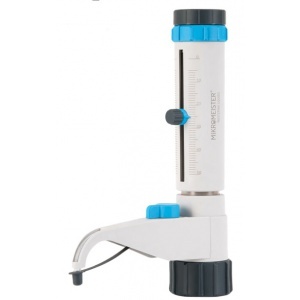
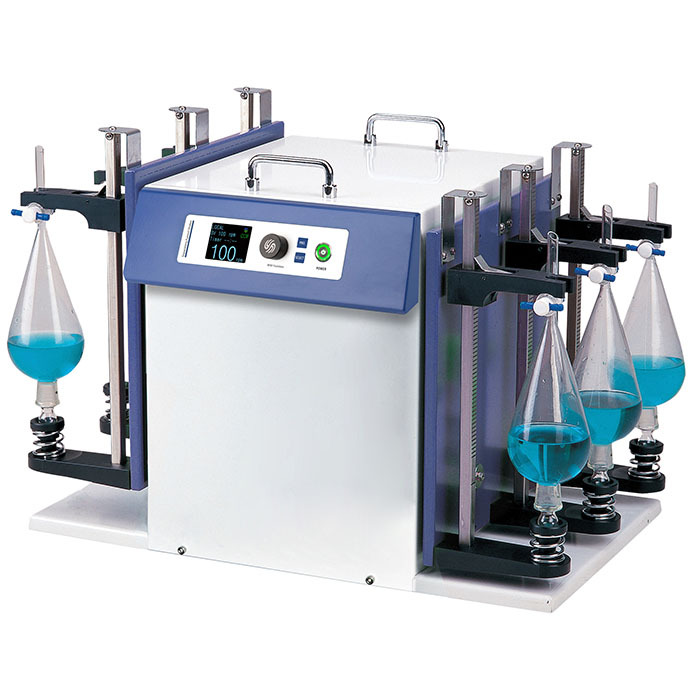
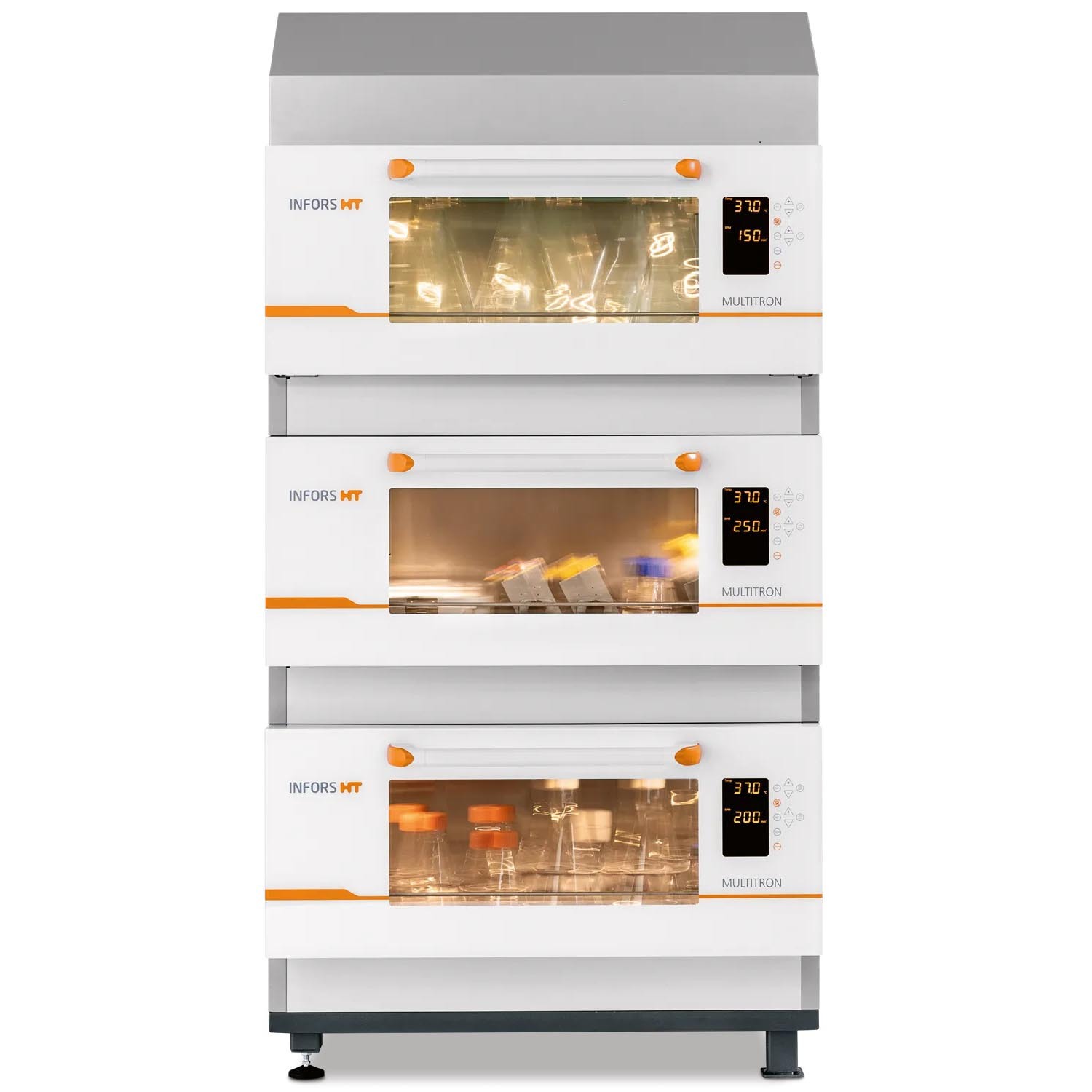
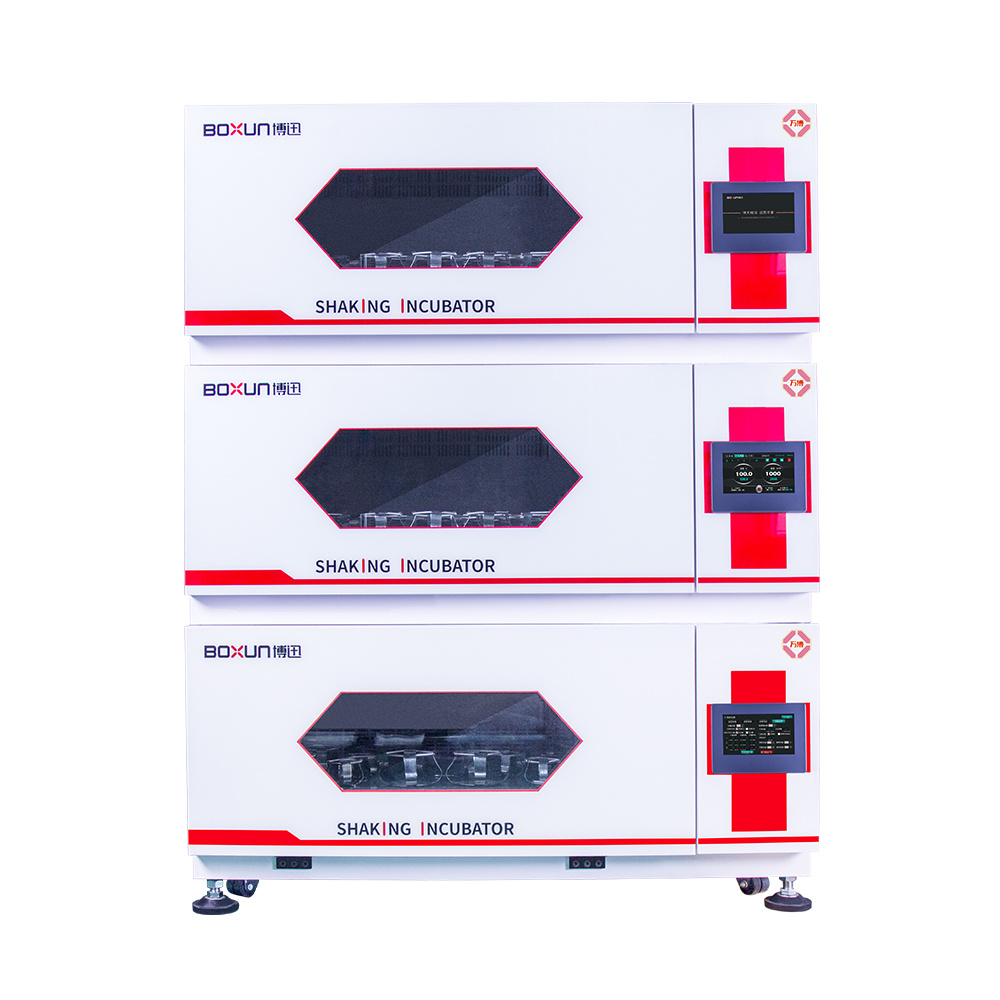


 咨询
咨询